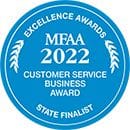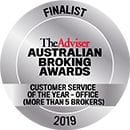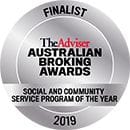How to take control of your debt and your future.
)
Debt is a reality for many people, whether it’s in the form of student loans, credit card balances, or a mortgage. While debt can be a useful tool for achieving certain financial goals, such as buying a home or funding education, it can also become a heavy burden if not managed properly.
For many, debt represents a significant obstacle on the path to financial freedom. But it doesn’t have to be this way. With the right strategies, you can take control of your debt—and your financial future.
In this blog, we’ll explore practical steps you can take to manage and reduce your debt, so you can regain control of your finances and start building the future you deserve.
Why taking control of your debt and your future
Debt can feel overwhelming, especially when it accumulates to the point where it seems impossible to pay off. The interest piles up, the minimum payments stretch your budget, and the stress can impact your overall well-being. However, taking control of your debt isn’t just about easing financial pressure; it’s about reclaiming your mental and physical health.
When you manage your debt effectively, you:
- Free up resources: By reducing debt, you can redirect money toward savings, investments, or other lifestyle goals.
- Lower financial stress: Managing debt responsibly reduces the anxiety that often comes with financial uncertainty.
- Improve financial stability: With less debt, you’re better equipped to handle unexpected expenses or changes in income.
- Build a path to financial freedom: The less you owe, the closer you are to achieving whatever it is you want to do.
The good news is that no matter how much debt you have, there are steps you can take to manage, reduce it and take control. Here’s how to get started.
Step 1: Understand your debt
Before you can take control of your debt, you need to understand exactly what you owe. Start by gathering information on all your debts, including:
- The total amount owed
- Interest rates
- Minimum monthly payments
- Payment due dates
Create a list that includes all this information. This will give you a clear picture of your current situation and help you prioritise which debts to tackle first.
Step 2: Create a debt repayment plan
Once you have a clear understanding of your debts, it’s time to create a repayment plan. There are two popular strategies for paying off debt:
- The snowball method: Start by paying off your smallest debt first while making minimum payments on your other debts. Once the smallest debt is paid off, move on to the next smallest, and so on. This method gives you quick wins and builds momentum, keeping you motivated as you see your debts disappear one by one.
- The avalanche method: Focus on paying off the debt with the highest interest rate first while making minimum payments on your other debts. Once the highest-interest debt is paid off, move on to the next highest. This method minimizes the amount of interest you pay over time, helping you save more money in the long run.
Choose the method that best suits your personality and financial situation. The most important thing is to commit to your plan and stick with it.
Step 3: Automate your payments
One of the best ways to ensure you stay on track with your debt repayment plan is to automate your payments. Set up automatic transfers from your checking account to your debt accounts. This ensures that you never miss a payment and can help you avoid late fees and additional interest charges.
Automating your payments also takes the emotion out of the process, making it easier to stay disciplined and consistent.
Step 4: Look for opportunities to pay down debt faster
If you want to accelerate your debt repayment, look for ways to pay more than the minimum each month. Here are some strategies to consider:
- Cut unnecessary expenses: Review your budget and identify areas where you can cut back. Use the savings to make extra payments on your debt.
- Increase your income: Consider taking on a side gig, freelancing, or selling unused items to generate extra cash that can be put toward your debt.
- Refinance or consolidate debt: If you have high-interest debt, consider refinancing or consolidating it into a loan with a lower interest rate. This can reduce your monthly payments and help you pay off the debt faster.
Step 5: Celebrate milestones and stay focused
Paying off debt can be a long and challenging journey, so it’s important to celebrate your progress along the way. Each time you pay off a debt or reach a milestone, take a moment to acknowledge your achievement. This will keep you motivated and remind you that your hard work is paying off.
Remember, the goal isn’t just to get out of debt—it’s to give you choice. As you reduce your debt, you’ll have more resources available to save, invest, and achieve your own goals, whatever they may be.
Take control of your debt today
Debt doesn’t have to control your life. By understanding your debt, creating a repayment plan, automating payments, and looking for opportunities to pay down debt faster, you can take control of your financial future. The strategies outlined in this post are just the beginning.
To dive deeper into actionable steps for managing debt and achieving financial freedom, download our free eBook, Your Finance Path: Strategies to Master Money and Take Control. It’s packed with insights and tips that can help you take control of your finances and start building the future you deserve.
Taking control of your debt is the first step toward taking control of your life.
Start today and set yourself on the path to peace of mind and choice.
) Author:Mark Attard
Author:Mark Attard| Tags:DebtReducing DebtDebt repayment |










